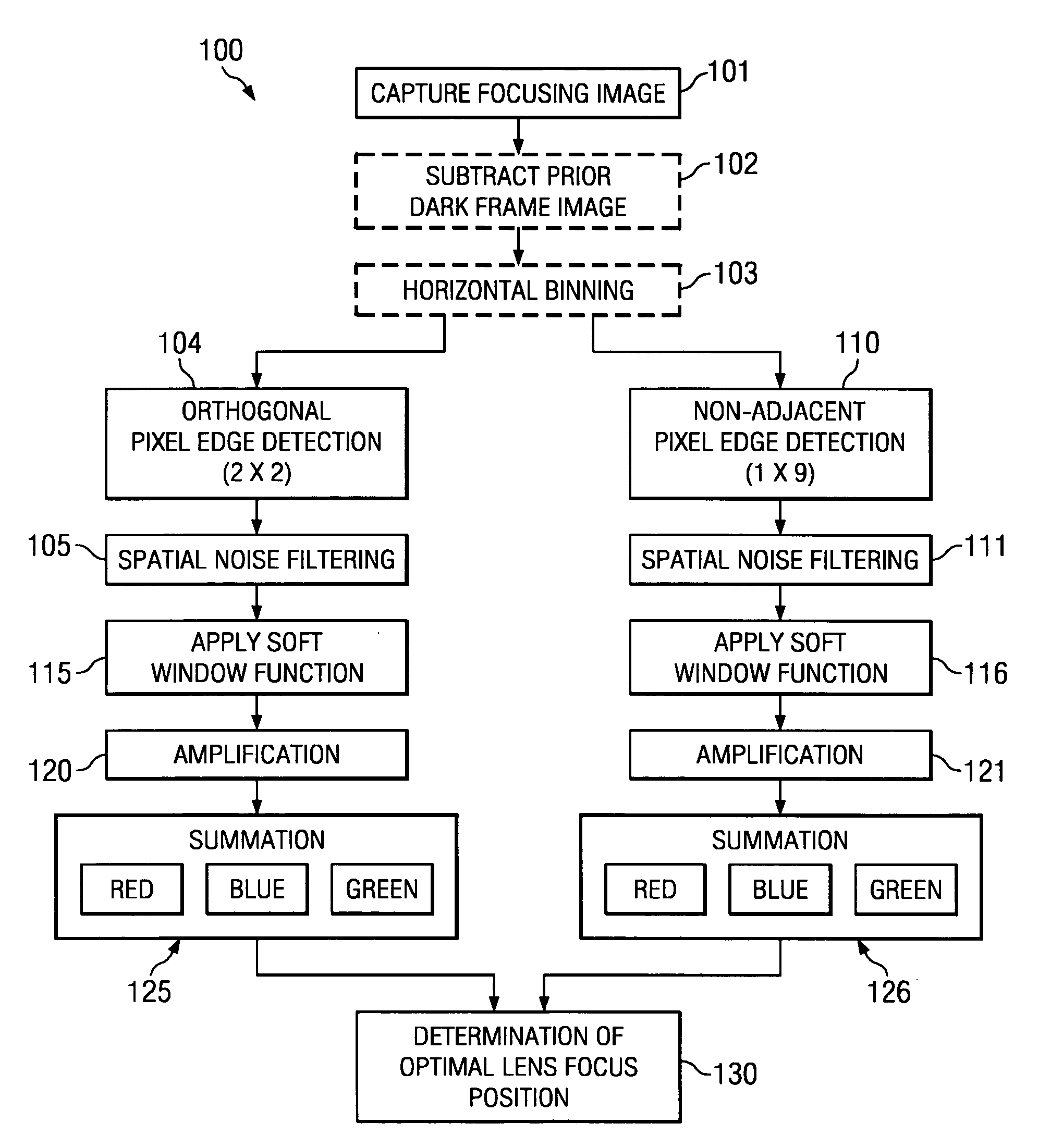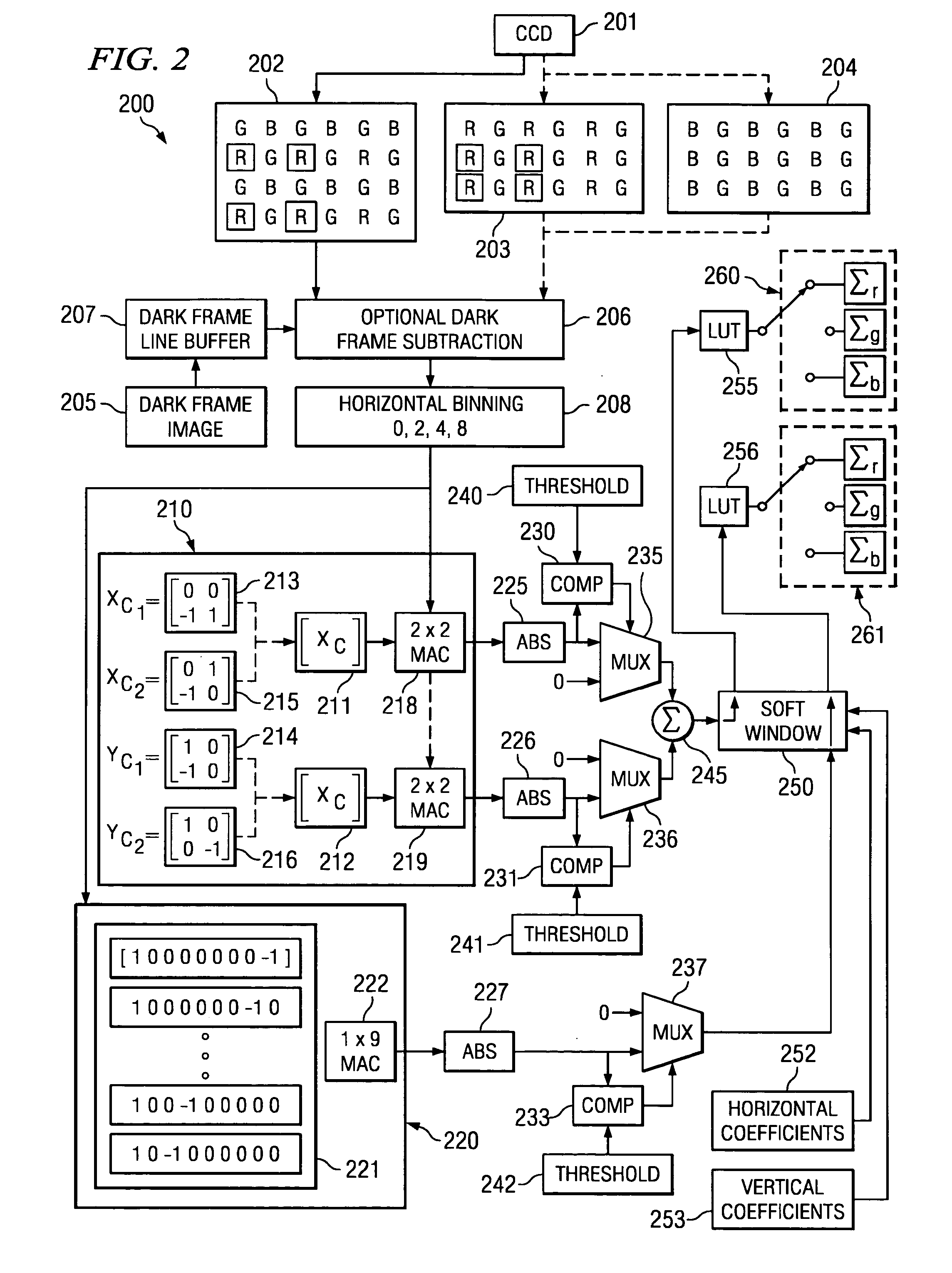Systems and methods for arriving at an auto focus Figure of Merit
a technology of merit and system, applied in the field of imaging, can solve problems such as frame, increase the cost of an edge detector, and inconsistent calculation results
- Summary
- Abstract
- Description
- Claims
- Application Information
AI Technical Summary
Benefits of technology
Problems solved by technology
Method used
Image
Examples
Embodiment Construction
[0010]FIG. 1 is a flow chart of embodiment 100 of a method for arriving at an auto focus Figure of Merit (FOM) for digital cameras. A focusing image is captured at 101 in a manner well known to those of ordinary skill in the art. Embodiments of the present systems and methods may employ a subtraction of a prior dark frame to remove dark noise from a focusing image prior to FOM calculations. Thus, at 102 an optional prior dark frame subtraction is carried out on the image captured at 101. A dark image previously captured with the shutter closed on the CCD gathers whatever electron well collection that is occurring in the absence of the light. Optional prior dark frame subtraction 102 removes a dark image from the CCD captured focusing image. Preferably, the dark frame image that is subtracted from the focusing image was taken at the same exposure settings as the focusing image.
[0011] The present systems and methods may also employ pixel binning to remove focusing image noise, partic...
PUM
 Login to View More
Login to View More Abstract
Description
Claims
Application Information
 Login to View More
Login to View More - R&D
- Intellectual Property
- Life Sciences
- Materials
- Tech Scout
- Unparalleled Data Quality
- Higher Quality Content
- 60% Fewer Hallucinations
Browse by: Latest US Patents, China's latest patents, Technical Efficacy Thesaurus, Application Domain, Technology Topic, Popular Technical Reports.
© 2025 PatSnap. All rights reserved.Legal|Privacy policy|Modern Slavery Act Transparency Statement|Sitemap|About US| Contact US: help@patsnap.com



